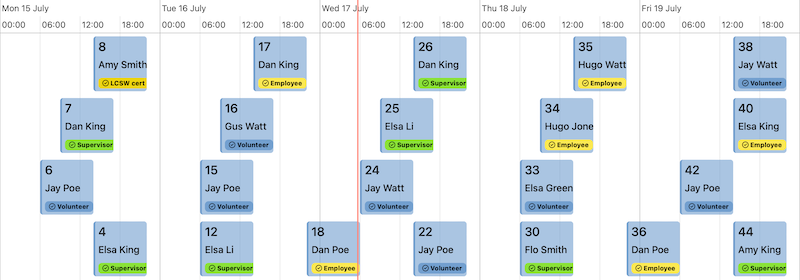Introduction
The Employee Shift Scheduling model is one of Timefold’s Planning AI models and is available on the Timefold Platform.
The Employee Shift Scheduling model assigns shifts to employees with the goals of creating schedules that minimize labor costs, ensure proper shift coverage, and treats employees fairly and with respect.
The model is built using the Timefold Solver SDK and the application includes Timefold Enterprise Solver, a scalable optimization engine that can solve complex constraint satisfaction problems.
| The maximum number of shifts in a dataset is limited to 400,000 to ensure optimal performance and stability of the model. For larger datasets, please contact Timefold support. |
The Employee Shift Scheduling model includes constraints for:
-
Matching employee availability, skills, and preferences with shifts.
-
Complying with labor law and regulations.
-
Scheduling priority shifts.
-
Managing shift rotations and patterns.
-
Keeping shift assignments within budget.
To learn more about individual constraints, see the Employee resource constraints and Shift service constraints guides.

Constraints have configurable weights, making them adjustable to meet different business goals and priorities.
The real-time planning API makes plans adaptable when unforeseen events inevitably occur, and the recommendations API can help you figure out which employees to assign to which shifts.
The REST API layer is defined on top of the model and serves as a communication point with the engine to provide a stable interface that allows you to manage the lifecycle of the optimization problem, from submitting the initial dataset to retrieving the final solution.
See the User guide to learn more about employee shift scheduling or follow the getting started: hello world guide.
Next
-
See the full API spec or try the online API.
-
Learn more about employee shift scheduling from our YouTube playlist.